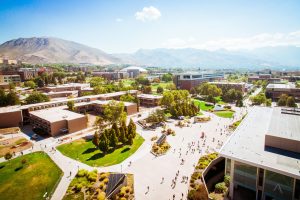How Virtual Labs Are Transforming Science Education
Science education has been rapidly evolving in recent years, and one of the most significant developments is the introduction of virtual labs. With the help of technology, virtual labs have completely transformed the way students learn and conduct experiments in the science classroom. As traditional labs become increasingly difficult to execute and access, virtual labs have emerged as a viable and powerful alternative. In this article, we will delve deeper into how virtual labs are revolutionizing science education and ushering in a new era of immersive and interactive learning.
The Rise of Virtual Labs
Before we dive into the details, let’s first understand what virtual labs are. Virtual labs are digital simulations that mimic real-life experiments and allow students to interact with various scientific concepts in a virtual environment. These labs use high-end technology, such as virtual reality, to provide a hands-on and immersive learning experience. The use of virtual labs in science education has been gaining popularity in recent years due to the numerous benefits it offers.
Accessible and Convenient
One of the biggest challenges faced by science educators is the limited accessibility of traditional labs. Students often have to rely on rigid schedules and limited resources to conduct experiments, which can hinder their learning experience. On the other hand, virtual labs are easily accessible and available round the clock. Students can access these labs from the comfort of their homes, and they do not have to wait for their turn or compete for resources. This convenience ensures that students can perform experiments at their own pace, leading to a more personalized learning experience.
Cost-Effective
Traditional labs require costly equipment and materials, making it challenging for many schools and institutions to maintain them. This limitation often results in students not having enough hands-on experience or being forced to share resources, hindering their learning. In contrast, virtual labs do not require any expensive equipment or materials, making it a cost-effective solution for science education. With virtual labs, students can conduct experiments without any budgetary constraints, allowing for more inclusive and equitable learning opportunities.
Enhanced Learning Experience
While traditional labs are undoubtedly beneficial, they can often be limited to only a few experiments due to safety concerns or time constraints. However, virtual labs offer a vast array of experiments that students can perform without any restrictions. These simulations allow students to manipulate variables, make real-time observations, and analyze the results, providing a more realistic and comprehensive learning experience. Moreover, the visually engaging and interactive nature of virtual labs also makes science education more engaging and interesting for students.
Transforming Science Education
The integration of virtual labs has completely revolutionized the science classroom, making it more interactive, engaging, and student-centered. It has also opened new possibilities for teaching and learning, enhancing the overall quality of science education. Virtual labs are not limited to a particular field of science; they cover a wide range of subjects, including biology, chemistry, physics, and more. This versatility has allowed educators to incorporate virtual labs into their curriculum and lesson plans, making learning more relevant and interesting for students.
Breaking Geographical Barriers
Not everyone has access to a well-equipped science laboratory, especially in rural or underprivileged areas. Virtual labs have helped bridge this gap and provide access to quality education for students everywhere, regardless of their geographical location. By using virtual labs, students from all over the globe can participate in the same experiments and share their findings, promoting cultural exchange and diversity in the science community.
Advancing Scientific Skills
Virtual labs also offer students the opportunity to develop and refine their critical thinking, problem-solving, and analytical skills. As students perform experiments, they must think critically, analyze data, and make conclusions, just like they would in a real lab. This approach prepares students for real-world scenarios and helps them develop crucial scientific skills that will benefit them in their academic and professional endeavors.
Empowering Teachers
Virtual labs are not only beneficial for students but also for teachers. Educators can use these simulations to supplement their teaching and create a more engaging and dynamic learning experience. Virtual labs provide teachers with tools and resources to monitor students’ progress, provide personalized feedback, and adapt their teaching methods according to the students’ needs. With virtual labs, teachers can also spend more time discussing concepts and answering students’ questions, fostering closer student-teacher interactions.
The Future of Science Education
The integration of virtual labs in science education has significantly impacted the way we teach and learn. These digital simulations not only make science education more accessible and affordable but also more interactive, immersive, and effective. As technology advances, we can expect virtual labs to become even more advanced, offering a more realistic and comprehensive learning experience.
In conclusion, virtual labs are transforming science education by making learning more accessible, affordable, and engaging. The rise of virtual labs has opened the doors to endless possibilities, making science education more inclusive and equitable. It is safe to say that virtual labs are here to stay and will continue to shape the future of science education for the better.











